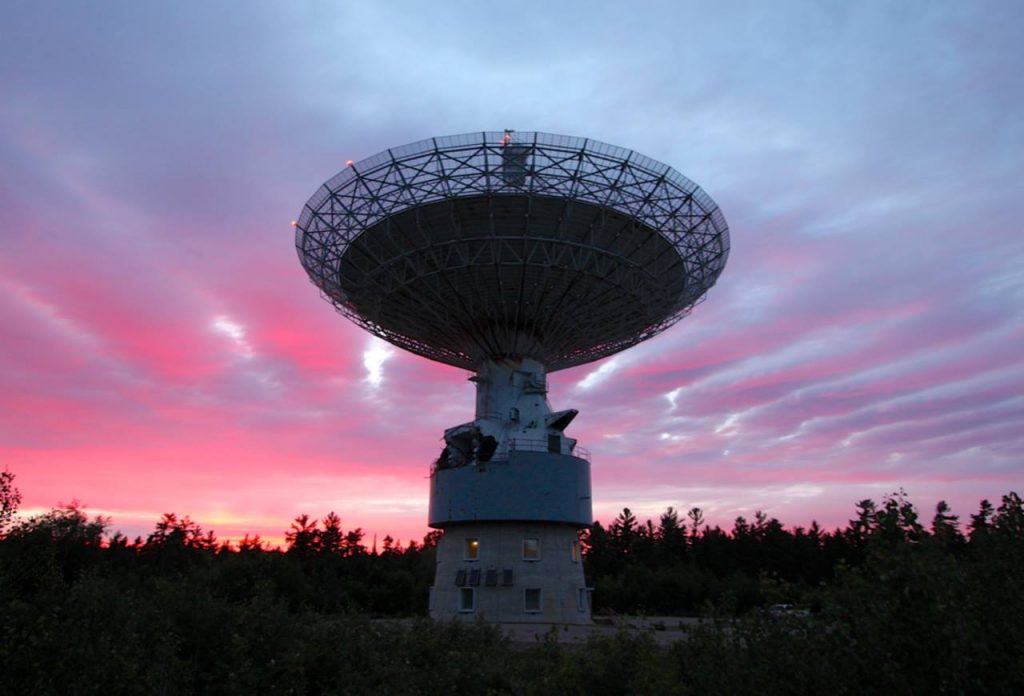Star Talk: The Algonquin Pulsar Project
 “The Algonquin Pulsar Project”, with Professor Ue-Li Pen
“The Algonquin Pulsar Project”, with Professor Ue-Li Pen
Abstract: The Algonquin Radio Observatory (ARO), built in 1965, along with the Dominion Radio Astrophysical Observatory (DRAO) are the first to achieve long baseline interferometry (VLBI), whereby two single-dish telescopes are combined to provide the same resolution as a telescope the size of Canada.
CITA, the Dunlap Institute, and the Department of Astronomy and Astrophysics collectively have continued the Canadian VLBI tradition with a new program to conduct transnational interferometric observations of pulsars and fast radio bursts (FRBs). The former has been named “scintillometry,” whose purpose is to utilize VLBI on earth in combination with scattering in the interstellar medium (ISM) to create an effective telescope size of ~astronomical unit to study pulsars and the intervening matter between us and them. The latter could provide the first ever spatial localization of FRBs.
Pulsar VLBI is located at the Algonquin Radio Observatory, which is visited frequently for data collection. The Crab pulsar will be studied using scintillometry techniques and VLBI. To obtain better images, one would need a telescope with a larger diameter. An easy way to increase diameter was to combine the signals from multiple telescopes using them as an interferometer thus creating VLBI. The data collected at Algonquin are synced up to data collected with other telescopes across the world. The radio waves that is emitted from the pulses propagate to telescopes on earth directly and indirectly via deflections on a scattering screen in the interstellar medium in space. The different paths interfere thus causing scintillation. By observing the scintillation with multiple telescopes on Earth, it is possible to estimate the pulsar’s position with extremely high precision.
—————–
About the Speaker: Prof. Ue-Li Pen is a theoretical astrophysicist with the Canadian Institute for Theoretical Astrophysics at U of T. He studies systems in which basic physical effects can be isolated from astronomical complexities. Current projects include the non-linear dynamics of the cosmic neutrino background, 21cm intensity mapping, pulsar VLBI scintillometry.
Prof. Pen strives to answer questions such as: What are the initial conditions for the universe? And how can we improve astrophysics measurement techniques by orders of magnitude to answer precise questions, e.g. neutrino mass, gravitational waves, pulsar emission?
He is deeply involved in Algonquin Radio Observatory VLBI, the Canadian Hydrogen Intensity Mapping Experiment, and the Murchison Widefield Array.
—————–
Date and Location: 8:10 PM, Mar 23 rd, McLennan Physical Laboratories Room TBA
Telescope observing: 9:00 PM on 14th floor of MP (weather permitting)


